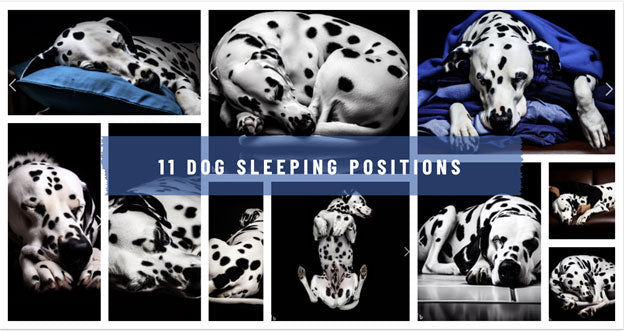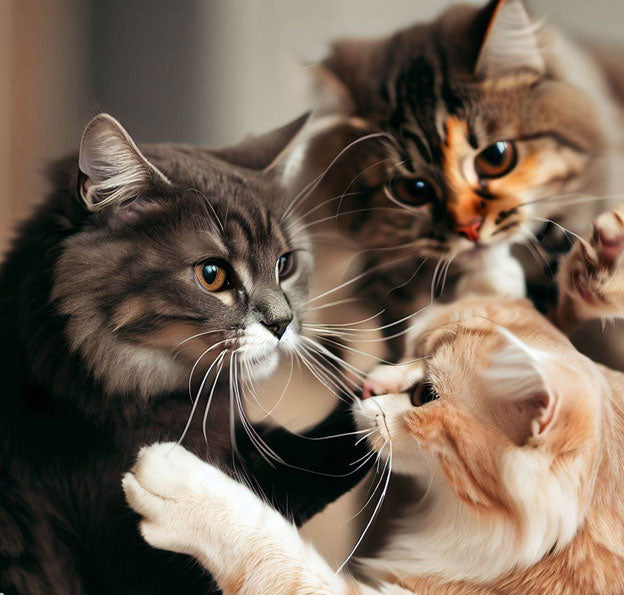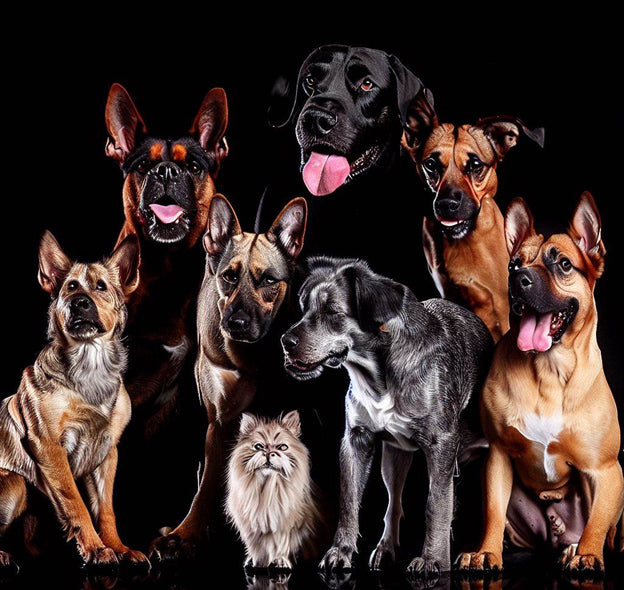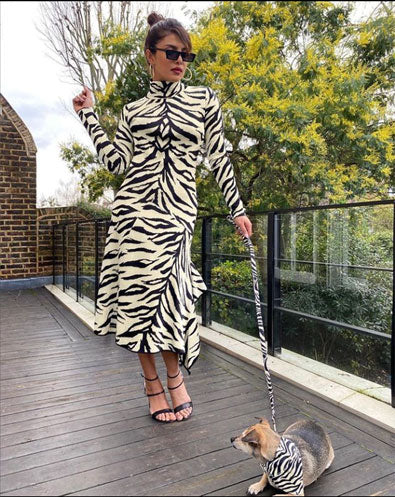
Pamper Your Pooch: Dog Grooming Tips for a Happy, Healthy Pet
Disclaimer: Some of the links in our blog posts are affiliate links. This means we may earn a small commission if you make a purchase through them which helps support our blog, at no extra cost to you.
Are you a dog owner seeking dog grooming tips and tricks, or perhaps just looking to level up your pet care game?
From the delicate art of dog nail cutting to giving your pup a salon-worthy makeover, we've got you covered. We'll even delve into vital facets of dog grooming, such as the nitty-gritty of teeth cleaning and anal gland maintenance.
Join us as we unlock the secrets to canine chic and wellness!
Dog Grooming Tips for Beginners
Grooming your dog can be rewarding and essential to pet care, ensuring your furry companion stays clean, healthy, and happy. If you're new to dog grooming, here are some valuable dog grooming tips and tricks to help you get started on the right paw:
-
Start Slow and Gradual: Begin by introducing your dog to grooming tasks individually. This will help them get used to the process without feeling overwhelmed.
-
Invest in the Right Tools: High-quality grooming tools like brushes, combs, and clippers designed for your dog's specific coat type are essential. Consult with a professional to find the best tools for your breed.
-
Regular Brushing: Brushing your dog's coat is not only about keeping it looking good but also about preventing mats and tangles. It's an excellent bonding time, too.
-
Bathing: Use a dog-specific shampoo and only bathe your dog when necessary. Frequent baths can strip their skin of essential oils.
-
Nail Trimming: Learn how to trim your dog's nails properly to avoid cutting too short and causing bleeding. If you need more clarification, seek guidance from a vet or professional groomer.
-
Ear Cleaning: Depending on the breed, dogs may need regular ear cleaning. Use a dog ear cleaner and be gentle to avoid hurting their sensitive ears.
-
Teeth Cleaning: Dental hygiene is crucial. Brush your dog's teeth regularly with a dog toothbrush and toothpaste, or provide dental chews and toys to help keep their teeth clean.
-
Anal Gland Expression: If your dog's anal glands become an issue, consult a vet or groomer. Expressing them incorrectly can lead to problems, so it's best left to professionals.
-
Be Patient: Dogs can be sensitive about grooming, mainly if they're not accustomed to it. Take your time and offer positive reinforcement, such as treats and praise, to make the experience more enjoyable for your pet.
-
Know Your Dog's Breed: Different breeds have specific grooming requirements. Research or consult with breed-specific resources to understand what your dog needs.
-
Safety First: Ensure a safe environment for grooming, free of hazards like sharp scissors or slippery surfaces. Watch for signs of stress or discomfort in your dog, and take breaks if needed.
-
Consider Professional Help: If you need clarification on any aspect of grooming or your dog has specific needs, consult a professional groomer or veterinarian.
Dog grooming can be a wonderful bonding experience for you and your pet. With the proper knowledge and approach, you can help your dog look and feel their best while ensuring their well-being.
Tips for Grooming Your Dog at Home
Grooming your dog at home is an enjoyable task requiring the right tools and approach. You'll need to build a good relationship with your dog, handle them carefully, and acquire the necessary grooming supplies. Some dogs can be naughty or become agitated during grooming, so mastering the art of soothing and calming them is a valuable skill.
How to Bathe Your Dog?
Bathing your dog is essential to their grooming routine to keep them clean and healthy. Here's a step-by-step guide on how to wash your dog safely and effectively:
Gather Supplies: Dog-specific shampoo (never use human shampoo, as it can irritate your dog's skin), towels, a non-slip mat (if bathing in a bathtub or shower), a brush, or a comb.
Brush Your Dog: Before bathing your dog, brush their coat to remove tangles and loose fur. This will improve the effectiveness of the bathing process and help prevent matting.
Use a Washing Station: Use a tub, sink, or outdoor area for bathing, depending on your dog's size. Ensure it's a comfortable, non-slip surface. Smaller dogs can also be bathed in a utility sink or a large basin.
Prepare the Water: Fill the tub or basin with lukewarm water, about belly-deep. Check the water temperature to make sure it's comfortable for your dog. Avoid hot water, which can scald your dog's skin.
Wet Your Dog: Gently wet your dog's coat with water, starting at the neck and working down, avoiding the head for now. Ensure the water penetrates the coat to the skin.
Shampoo Application: Apply dog-specific shampoo, avoiding eyes, ears, and mouth. Use fingers to lather from neck to tail.
Wash the Head and Face: Use a damp cloth or a sponge to clean your dog's head and face. Be careful not to get water or shampoo in their eyes, ears, or nose.
Rinse Thoroughly: Rinse your dog thoroughly, ensuring you remove all shampoo from their coat. Use the handheld showerhead or a container to rinse, starting at the head and moving down. Make sure there's no shampoo residue left.
Towel Dry: Gently towel dry your dog, starting with their head and moving down. If your dog has a long coat, be extra thorough to remove excess moisture. Cover your furball in a blanket to make it feel warm and comfortable.
Brush Again: Once your dog is mostly dry, brush their coat to prevent matting and help fluff up their fur.
Bathing frequency varies with breed and activity level. Consult your vet or groomer for advice. Proper bathing maintains hygiene and coat health and strengthens your bond with your pet.
How to Prepare a Dog Washing Station for Home?
Creating a dog washing station at home can make bath time more convenient and enjoyable for you and your furry friend. Here's how to prepare a dog washing station in your home:
-
Select an area that's easy to access and clean. Popular choices include a bathroom, laundry room, or outdoor area with a hose connection.
-
Lay down a non-slip or rubber mat in the chosen area to prevent your dog from slipping and make them feel secure.
-
Ensure the water temperature is comfortable for your dog. Use lukewarm water to avoid scalding or chilling your pet.
-
Consider using an elevated platform or table designed for dog grooming. This can make the process easier on your back and more comfortable for your dog.
-
Use a leash or harness to secure your dog during the bath. This helps prevent them from jumping out or escaping the bathing area.
-
Organize your supplies within easy reach so you don't have to leave your dog unattended during the bath.
Setting up a dedicated dog washing station at home can make the bathing process more efficient, stress-free, and enjoyable for you and your furry companion. It also lets you maintain your dog's hygiene and well-being without frequent trips to a professional groomer.
Dog Hair Cut at Home
Trimming your dog's hair at home can be a cost-effective and convenient way to keep your pet looking and feeling their best. However, it's essential to approach this task with care and the right tools to ensure a safe and comfortable grooming experience for your dog. Here's a step-by-step guide on how to cut your dog's hair at home:
Gather the Necessary Tools: To groom your dog, you'll need dog-specific clippers with blade attachments, grooming scissors, a sturdy table or non-slip surface, a brush, a comb, towels, a pillow, and treats for positive reinforcement.
Prepare Your Dog: Brush your dog well to remove tangles and mats. It's easier to clip clean fur on a well-brushed dog. Keep your dog calm and comfortable by taking them for a walk or playing with them before grooming.
Start Clipping: Clip toward hair growth, using caution around sensitive areas like ears, paws, and tail. Use scissors for these areas. Maintain even pressure and angle to avoid uneven cuts.
Trim with Scissors: Use scissors for detailed work, especially around sensitive areas like the face, nose, and ears. Be cautious near these areas.
Pay Attention to Paw Pads: Trim the hair around your dog's pads to prevent matting and slipping. Use scissors or clippers with a guard attachment.
Tail and Rear: Trim the tail and the fur around the rear area, keeping your dog's comfort in mind.
Final Brush and Clean-Up: Give your dog a final brush to remove any loose hair after the haircut. Clean up the area, including the clippings on the floor.
If you need more clarification about grooming your dog's hair, seek professional assistance. Grooming should be a positive experience for you and your dog, so be patient and use positive reinforcement.
How to Clean Your Dog’s Hair?
Cleaning your dog's hair involves regular grooming and maintenance to keep their coat healthy and free from tangles, mats, and dirt. Here's a step-by-step guide on how to clean your dog's hair effectively:
Brushing: Regularly brush your dog's coat to remove loose hair, debris, and tangles. The frequency of brushing depends on your dog's breed and coat type. Long-haired dogs may require daily brushing, while short-haired breeds can be brushed less often.
Bathing: Bathe your dog as needed, typically every 4-6 weeks or when they get dirty. Use a dog-specific shampoo to avoid skin irritation. Thoroughly rinse off the shampoo after washing.
Drying: After bathing, dry your dog with a towel or a pet-specific blow dryer in a cool setting. Proper drying prevents your dog from getting cold and helps prevent matting in their fur.
Mat and Tangle Removal: Regularly check for mats and tangles in your dog's coat, especially if they have long hair. Use a detangling spray and a comb to work through them gently. Be patient and gentle to avoid causing any discomfort.
Monitor Skin and Coat Health: Keep an eye on your dog's skin and coat for any signs of allergies, infections, or parasites. Consult your veterinarian if you notice any issues.
Professional Grooming: Some breeds may require regular visits to a professional groomer for breed-specific cuts and styles.
Dog grooming needs vary by breed, coat type, and activity level. Regular grooming promotes their well-being.
Dog Nail Cutting Tips
Trimming your dog's nails is essential to their grooming routine, as long nails can lead to discomfort, pain, and potential injuries. Here's a step-by-step guide on how to cut your dog's nails safely:
Gather Your Supplies: Gather dog-specific nail clippers (guillotine, scissor, or grinder style, depending on your preference).
Position Your Dog: Ensure your dog is calm, relaxed, and comfortable. Some dogs may prefer to have their paws lifted one at a time, while others may be more comfortable on their side.
Start with the Back Paws: Start by trimming the back paws, which usually have shorter nails and are less sensitive. Gently hold the paw, apply slight pressure to extend the nail, and trim a small amount at a time, avoiding the quick.
Use Caution with the Front Paws: Front nails are often thicker and may have longer quicks. Trim them carefully, cutting small amounts at a time, and be especially cautious.
Monitor the Nails: Examine the cross-section of each nail; you should see a small dot in the center. Stop trimming when you see this dot.
Trim your dog's nails regularly to maintain the desired length. The frequency may vary depending on your dog's activity level and the type of surface they walk on.
How to Deal With Dog Nail Cutting Bleeding?
The quick is the pinkish area inside the nail that contains blood vessels and nerves. Be cautious not to cut into it, as it can cause bleeding and pain. Front nails are often thicker and may have longer quicks. Trim them carefully, cutting small amounts at a time, and be especially cautious. Examine the cross-section of each nail; you should see a small dot in the center. This is the beginning of the quick. Stop trimming when you see this dot. If you accidentally cut the quick and bleeding occurs, apply styptic powder to the bleeding area. For a herbal route, make a turmeric paste for topical application, which helps in reducing pain and inflammation. If bleeding continues or if you're unsure, consult your veterinarian.
Related read: Is Turmeric Good For Your Dog?
Dog Teeth Cleaning
Proper dental hygiene is essential for your dog's overall health and well-being. Here's a guide on how to clean your dog's teeth:
Gather Supplies: Dog-specific toothbrush and toothpaste (never use human toothpaste, as it can be toxic to dogs).
Gradual Introduction: Start by gently massaging your dog's gums with your finger. Do this a few times to help them get used to the sensation.
Begin Brushing: To brush your dog's teeth, apply a small amount of toothpaste specifically made for dogs onto a toothbrush. Next, gently lift your dog's lip and brush their teeth in a circular motion. Focus on the outer surfaces of the teeth, as these areas are more susceptible to plaque and tartar buildup.
Dental Chews and Toys: Provide dental chews, toys, or treats designed to promote dental health. These can help reduce plaque and tartar buildup.
Water Additives: Some water additives can help control plaque and bacteria in your dog's mouth. Consult your veterinarian for recommendations.
Good oral health is vital for your dog's well-being. Regular at-home cleaning and professional check-ups keep their teeth and gums healthy and strengthen your bond.
How to Maintain Your Dog’s Dental Hygiene?
Maintaining your dog's dental hygiene is crucial for their overall well-being. Schedule regular dental check-ups with your veterinarian, and introduce dog-specific toothbrushing, using positive reinforcement to make it a positive experience. Provide dental chews, toys, or treats, and choose dental-friendly dog food to help reduce plaque and tartar buildup. Look for signs of dental issues like bad breath or swollen gums, and consult your vet when needed. Consider professional dental cleanings, safe chew toys, and maintaining a clean living space. Start dental care early, and consult your veterinarian to ensure your dog enjoys strong, healthy teeth and gums.
Dog Anal Gland Cleaning
Cleaning your dog's anal glands at home is possible, but should only be attempted by an experienced individual for recurring issues. Seek professional advice if needed. Here's a step-by-step guide:
-
Find a quiet, well-lit space and position your dog on a non-slip surface. Make sure your dog is calm and relaxed.
-
Put on latex or nitrile gloves to protect your hands.
-
Stand behind your dog and gently lift their tail to expose the anus. You should see two small openings on either side of the anal opening. These are the anal glands.
-
Use your thumb and forefinger to apply gentle, even pressure on both sides of the anal glands. Gently squeeze and push upward to help the contents release. Be extremely gentle and cautious to avoid causing your dog pain or discomfort.
-
After expressing the anal glands, clean the area with a clean cloth, disposable wipes, and a mild anal gland cleaning solution. Wipe gently from front to back to avoid introducing bacteria into the anal glands.
-
Dispose of the gloves, wipes, and any used materials properly.
-
Reward your dog with treats and praise to create a positive association with the procedure.
Monitor your dog for any signs of discomfort or infection in the days following the cleaning.
Dog Ear Cleaning
Cleaning your dog's ears is essential to routine grooming and maintenance to prevent infection and keep them comfortable. Here's how to clean your dog's ears safely:
Gather Supplies: Dog-specific ear cleaning solution, cotton balls or pads, towel or tissue for clean-up.
Apply Ear Cleaning Solution: Gently lift your dog's ear flap and apply the recommended amount of cleaning solution. Do not insert anything into the ear canal; focus on the visible part.
Massage and Wipe: Gently massage the base of the ear to help dislodge debris. Your dog may shake their head, which is normal. Use a cotton ball or pad to wipe away any loosened dirt and debris from the ear.
Clean your dog's ears as needed, typically every 1-2 weeks for breeds prone to ear issues. However, the frequency may vary based on your dog's individual needs and your veterinarian's recommendations.
Dog Eye Cleaning
Cleaning your dog's eyes is integral to routine grooming and maintenance to prevent irritation and keep their eyes healthy. Here's how to clean your dog's eyes safely:
Gather Supplies: Dog-specific eye cleaning solution, cotton balls or pads, towel or tissue for clean-up.
Apply Eye Cleaning Solution: Use a dog-specific eye-cleaning solution. Moisten a cotton ball or pad with the solution and gently wipe away any crust or discharge from the corner of your dog's eyes.
Clean your dog's eyes as needed. Breeds with long hair or dogs prone to tear staining may require more frequent cleaning. Consult your veterinarian for specific recommendations.
Home dog grooming isn't just about keeping your pet clean – it's a chance to bond, create, and make your furry friend feel fantastic. With patience, the right tools, and a gentle touch, turn grooming into a delightful routine your dog adores. From brushing to bathing, make it an exciting adventure. The result? Happiness is a warm puppy, isn’t it?
Popular Blog
7 Unique Products That Every Dog Owner Will Love
Let’s be honest, our dogs run the house. They make us laugh, steal our socks,...
50 Funny Dog Birthday Puns for a Tail-Wagging Good Time!
Here is a delightful collection of 50 dog birthday puns guaranteed to bring s...
Homemade Dog Toys Your Pooch Will Love: Top 10 DIY Delights
Pet toys, especially safe dog toys, can be expensive and don’t last too long....
Canine Companions Worldwide: Modern Treatment & Taxes for Dog Owners
The intricate relationship between humans and dogs is a testament to a profou...











